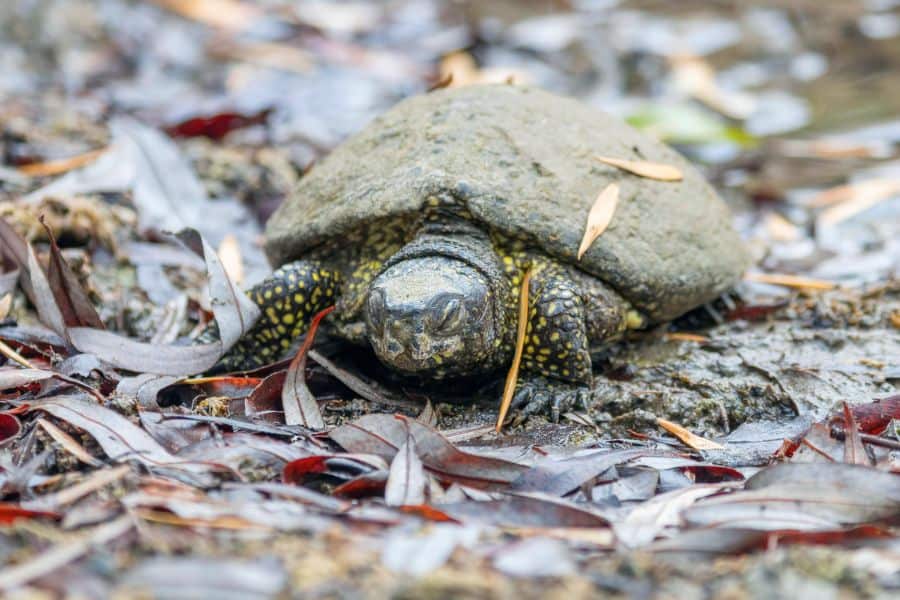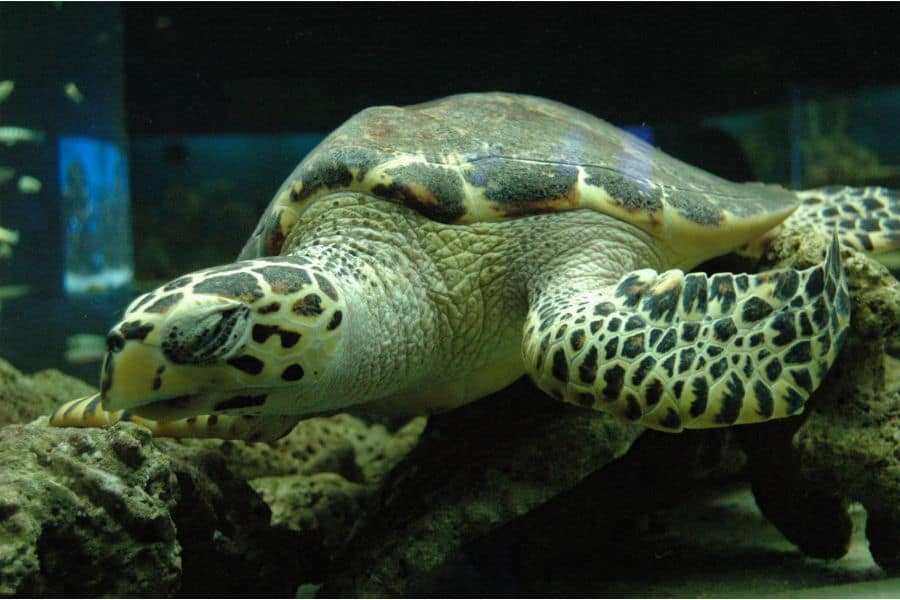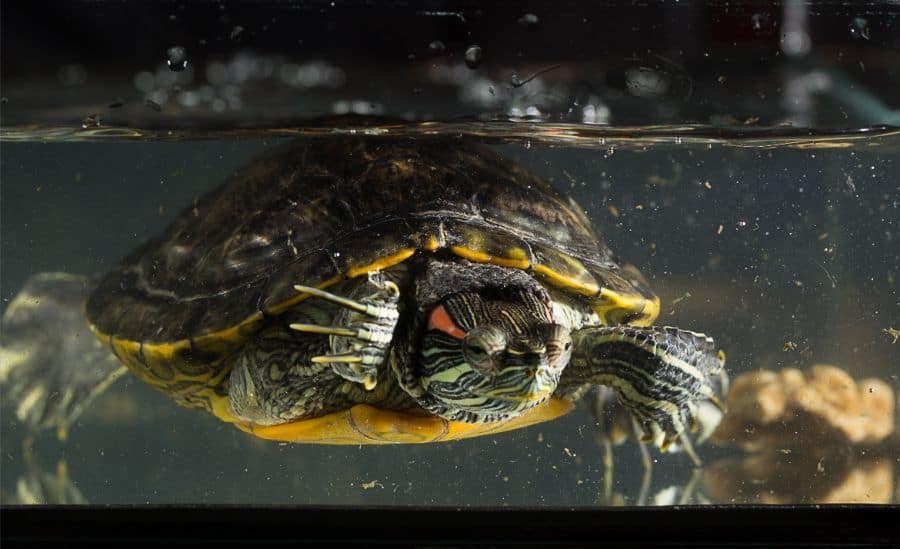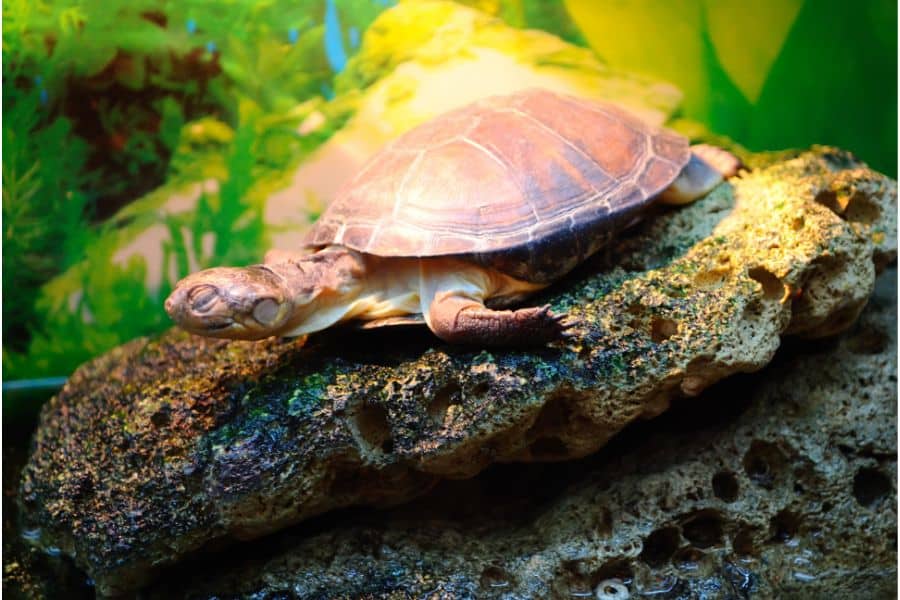As a reptile, turtles are known for their long lifespan, with some species able to live for more than 100 years.
However, like all living organisms, turtles will eventually pass away. Whether you’re a pet owner or just an enthusiast, it’s important to learn how to tell if a turtle is dead and what happens when the pet hibernates.
Turtles, like many other reptiles, are capable of hibernating. During hibernation, turtles slow down their metabolism and become less active. This can make it difficult to determine whether the turtle is alive or dead.
The good news is the turtle will always retain some form of mobility even when its metabolism is slowed down during hibernation. Therefore, among all the ways we will talk about, the best way to know if your turtle is alive is if it exhibits any form of motion.
In this article, we’ll cover the signs of a dead turtle, what a dead turtle looks like, and how to distinguish between a dead and a sleeping or hibernating one.
How To Tell If A Turtle Is Dead?
If you are wondering if your turtle is hibernating, sleeping, or dead, then your biggest question is, ‘what does a dead turtle look like?’ Please take in a deep breath and try not to nitpick each and every demeanor of the turtle anxiously.
A dead turtle will often have a lifeless appearance. Its limbs will be stiff and immovable, and its eyes and mouth may be open. Depending on how long the turtle has been dead, it may also have a discolored or pale appearance. In some cases, a dead turtle may have a foul odor.
Do not worry; the following signs and symptoms will definitively answer all your queries:
1. Unresponsive
If you try to move or touch a living turtle, it will usually respond by retracting its limbs or moving its head. However, a dead turtle’s limbs will be stiff and immovable, particularly the legs. If you gently touch the turtle’s legs and they do not respond, it may be a sign that the turtle has passed away.
Ensure that the limbs are not unresponsive, stiff, or lifeless. Any sign of voluntary or involuntary movement on the turtle’s side will assure you that he/she is alive.
2. Abnormally Cold Turtle
Turtles are examples of ectothermic (cold-blooded) animals; they rely on external sources of heat to regulate their body temperature. These animals do not have the ability to generate heat internally through metabolic processes, so their body temperature fluctuates with the ambient temperature of their environment.
As cold-blooded animals, turtles rely on their environment to regulate their body temperature. If a turtle feels abnormally cold to the touch, it may be a sign that its body functions have stopped working and it has passed away.
3. Deep, Sunken Eyes
The eyes of a living turtle are usually bright and alert, with a visible iris and pupils. In contrast, the eyes of a dead turtle may appear sunken, dull, or cloudy. The eyes may also have a cloudy look, indicating that the turtle has passed away.
However, it is also important to note that sunken eyes can also point to dehydration and sickness in the turtle, not necessarily death. A veterinarian will be able to conduct a thorough examination and provide appropriate diagnosis and treatment options based on the specific condition of the turtle.
4. Open Eyes
Like many other species, the turtle might also exhibit wide open eyes depending on the posture in which the eye muscles were during the time of death. Muscles of the eyes relax and contract upon the turtle’s wish, but when the turtle’s dead, the muscles can relax but are unable to contract, leaving them open.
It is not a definitive indicator of death, but in unison with other factors, it can be considered a clear sign that the turtle is no more.
5. Visible Sign of Decomposition on the Turtle’s Body
If you notice any visible signs of decomposition on the turtle’s body, such as mold, fungus, or maggots, it is a clear sign that the turtle has passed away.
These signs of decay, including sunken skin, indicate that the turtle’s body functions have stopped working and it is in the process of decomposing. Before decomposition, you may witness bodily changes like a cracked shell, dismemberment due to physical trauma, and blood spots from an injury.
6. Bad Smell of A Decomposing Turtle
A foul smell starts to creep in when the body of the turtle is decomposing.
If you notice a strong, foul odor coming from the turtle’s enclosure, it could be a sign that the turtle has passed away. The smell is caused by the decomposition of the turtle’s body, which produces gases and other chemicals that are unpleasant to the human nose.
7. Fly Infestation
A large number of flies or other insects in the turtle’s enclosure is a dead giveaway of a dead turtle. But please keep in mind that this will only happen once the body has started to rot and decompose. Flies are attracted to decaying matter and often lay their eggs on the body of a dead animal.
8. Floating on Water
This portion will answer a very common question/myth/assumption – Do turtles float or sink when they die?
While it’s commonly believed that all dead turtles float, this is not always the case. Some turtles may sink to the bottom of their enclosure or natural habitat when they pass away. However, if a turtle is floating upside down, it is likely that it has passed away.
This occurs because the turtle’s body is no longer able to control its buoyancy, and it will remain floating until it is removed from the water.
Turtles that have recently died or are in the early stages of decomposition may sink to the bottom of the water body. This is because as the internal organs of the turtle break down, gases like methane and carbon dioxide can accumulate, causing the turtle to float. This is more likely to occur in turtles that have been dead for a longer period of time.
9. Discoloration
Discoloration in a turtle could refer to changes in the skin or shell color, and various factors, including injury, illness, stress, or environmental factors, among others, can cause it.
Depending on how long the turtle has been dead, it may also have a discolored or pale appearance. The shell or skin may have lost its vibrant color and may appear dull or grayish in color.
Discoloration happens in dead turtles due to decomposition since the tissues start to break down, altering their properties and overall structural integrity. When assessing the health or status of a turtle, it is important to consider multiple factors in addition to discoloration.
10. If the Turtle Does Not Breath, React to Touch near The Cloaca
The cloaca (essentially the turtle’s butt) is the opening at the base of the tail connected to the digestive tract, the bladder, and the reproductive system. These three body systems empty out of this cloaca.
Apart from performing these purposes, the cloaca is also a sensitive area that is more susceptible to reaction than the turtle’s limps. If you tried poking the turtle and the limps are still unresponsive, then gently pressing around the tail and cloaca perfectly jolt your turtle from hibernation.
The key point is that this only happens when the turtle is in hibernation or sleeping. If the turtle is sick or suffering from stress, then the response might be unpredictable. With that said, let’s talk about hibernation in turtles and how you can differentiate it from death & sleep.
Brumation ‘Hibernation’ in Turtles
If you’re a turtle owner, you may have heard of brumation, a process that is similar to what we call hibernation in mammals. To put it simply, turtles do not hibernate; they brumate.
Brumation is a natural state of dormancy that some turtles enter during the colder months of the year.
It’s a period of reduced activity, where the turtle’s metabolism slows down, and they become less active. During this time, the turtle may spend more time relaxing when they are not fully asleep but not fully awake.
Turtles Brumation Cycle: How it Works
Cold-blooded animals like turtles & other reptiles rely on external sources of heat to regulate their body temperature rather than generating heat internally, like mammals and birds.
This means that they have a lower metabolic rate than warm-blooded animals, which means that they require less energy to maintain their body temperature. Turtles are able to maintain their body temperature within a narrow range by adjusting their behavior in response to changes in their environment.
For example, if a turtle is too cold, it will bask in the sun or move to a warmer area to increase its body temperature. Also, if a turtle is too hot, it will seek shade or move to a cooler area to decrease its body temperature.
They are also able to regulate their body temperature through behavioral adaptations such as burrowing underground, which allows them to avoid extreme temperatures and maintain a more stable body temperature.
Brumation is a natural process that helps turtles conserve energy during the colder months when food and other resources are scarce. In the wild, turtles that live in areas with cold winters will typically enter brumation in the fall and remain in this state until the weather warms up in the spring.
Brumation is triggered by a combination of environmental cues, including changes in temperature, daylight, and humidity. As the days get shorter and the temperatures start to drop, turtles will begin to slow down and reduce their activity. This is a sign that brumation is beginning.
They hibernate for about 2 to 4 months, from October to December to February.
During this period, turtles will often find a quiet spot to rest, such as under a pile of leaves or in a burrow. They will reduce their metabolism and may go for extended periods without eating or drinking. Some species of turtles will also reduce their heart rate and breathing during brumation.
If your turtle doesn’t naturally hibernate, then you can have professionals help you do the job. Inducing brumation has lots of benefits for the overall health of your pet and will go a long way to ensure it survives the harsh winter. However, it is also important to remember that not all turtles go through brumation.
Some species of turtles, like Snapping Turtles, brumate depending on the climate. Snapping Turtles have adapted to be incredibly tolerant to the cold in cold temperatures and are known to remain active and feed during the winter months. However, in hotter climates, the freshwater Snapping Turtles will brumate.
Read More: Is My Aquarium Snail Dead?
Frequently Asked Questions
What Are the Signs of A Dying Turtle?
Knowing the signs of a dying turtle can save you a sad affair in a matter of days. Some include but are not limited to:
- Sunken eyes.
- Shell rotting.
- Trouble breathing.
- Sluggish movement.
- Refusal to eat.
- Discharge through the mouth.
- Dried, discolored, or sunken skin.
- Weird-looking feces.
How to Revive a Dead Turtle
Sadly, you cannot revive a dead turtle. However, if the turtle is hibernating, not moving, feels cold, or has symptoms of a dying turtle, then there are a few things you can do.
Start by checking the pulse and movement on the cloaca. Once you notice it is still breathing, then you can proceed to warm the turtle for about 30 minutes in a tub with room temperature water. This should kickstart its normal functions, and you will see it moving shortly.
Always ensure you consult a vet in case of in light of such complications.
Conclusion
These full-proof signs will help you to differentiate between a dead and a sleeping or hibernating turtle definitively. However, it is always important to take action and consult with a veterinarian to confirm the turtle’s health status.




